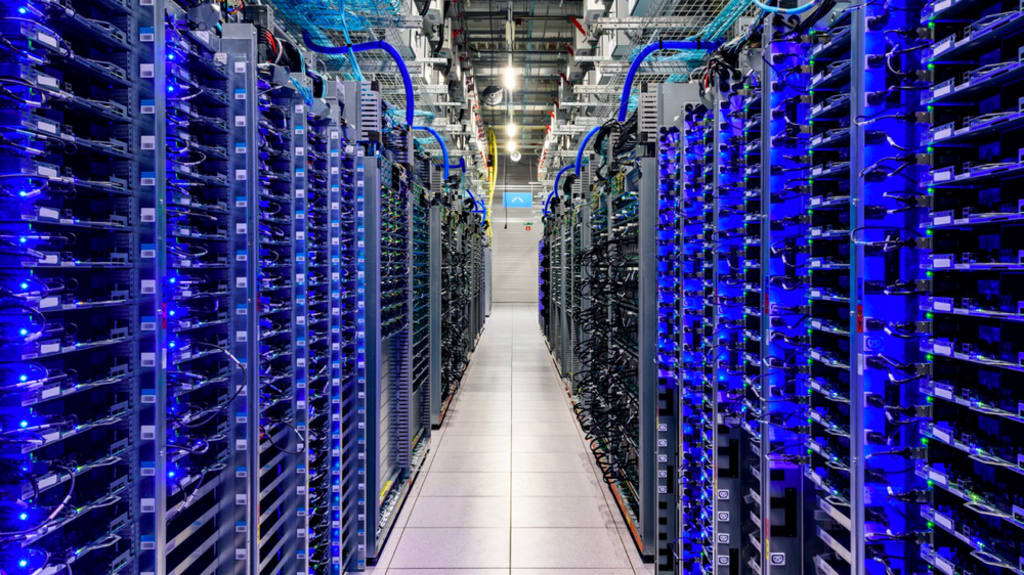The World Grows Smaller as Networks Grow Larger
The Age of Digital Transformation

We live in a world that is entirely immersed now in the digital reality. The common catch phrase the last several years has been digital transformation, as every business tries to adapt and grow into a revolving digital world. The simple truth is that the world is forever growing smaller, and this is further accomplished by every communication line we dig into the ground.
It is a little-known fact that we have been on this path for generations. The first transatlantic cable was opened August 16th, 1858 when Great Britain’s Queen Victoria and USA’s president James Buchanan exchanged telegraphs. This original instance had its issue and has a rich history, suffice it to say that improvements were made over the next several years for an overall better experience.
It would be almost a hundred years later when the first telephone cables became alive across the Atlantic. On September 25, 1956 between Gallanach Bay in the UK and Newfoundland in Canada, a cable holding thirty-six telephone cables came alive.
The real meat of the digital age comes alive with TAT-8, the digital fiber cable that was completed in December of 1988. The telecom companies of the world (AT&T, France Télécom, and British Telecom) came together to complete the project. It cost over $330 million to deliver, and it was in operation from 1988 to 2002.
December 13th, 2018, Acacia Communications released word that the first 400G single carrier DWDM (Dense Wavelength Division Multiplexing) transmission on the Marea submarine cable was transmitted successfully. The cable is 6,600km long and runs from Virginia Beach, Virginia and Bilbao, Spain. The cable is funded and built by Microsoft, Facebook, and Telxius.

Dense Wavelength Division Multiplexing (DWDM) is the technology to send multiple simultaneous streams of photons down a fiber-optic cable because they utilize different wavelengths. These wavelengths are also referred to as lambdas (λ), and commonly thought of as colors. To put this into a practical illustration, consider the following. Let’s say the normal fiber optic cable can only have the color red sent down it, the color red (the frequency of the energy defined by the wavelength) is the only color both transmitting and receiving devices can understand. DWDM allows the sending and receiving instruments to understand a rainbow, instead of just the single color. In practical terms, this translates a single fiber optic cable into many fiber-optic cables. It is a method of virtualizing.

Virtualizing is common in IT, and in networking as well. Whether we are talking about VLANs, VRFs, VDCs, contexts, or now even security layers within networking. The entire realm of the server industry got spun on its head with VMware’s methodology on virtualizing servers. This was taken one step further with the introduction of the cloud. At first, we reshaped our resources at the site level, then we did it at the company level, and now with the cloud we are reshaping it at the global level.
If we are paying attention, we might ask ourselves why this is important to us personally? It is. Information that might have taken months to traverse the globe just seventy years ago, now transmits the globe in seconds. The world is shrinking. I honestly don’t know if we can shrink it more, perhaps we can’t. But we will try. At the very least we will optimize.
This has real world implications in politics, religion, philosophy, and our daily lives. Issues in the political arena about privacy have never been so critical. Europe’s passing of the General Data Protection Regulation (GDPR) on May 25, 2018 was a major step forward in protecting individual’s personal privacy. In an era where we record every detail about our lives on some, or many, social media platforms, privacy will be a reigning argument for the foreseeable future.
The era of digital transformation also finds itself very directly in our personal lives. This might have never been made so obvious when countries around the world were thrown into mass revolution, all directly due to the digital age. If anyone doubts the direct personal implications these new technologies are having in people’s lives, we should have to look no further than Arab Spring. Instantaneous communication, recording brutalities, documenting suffering, personal tragedies, and denying people the right to shape their destinies were all contributing factors to Arab Spring. An event credited with two years of upheavals all over the Arab world from 2010 to 2012. And a shrinking world, and digital communication were at the forefront.
Networks make this communication possible. At a fundamental level we might just be transmitting 0s and 1s across ‘the wire.’ But those 1s and 0s shape lives. They shape governments. They shape the financial world. The financial sector has also been entirely transformed by not just the introduction of the common computer, but also in that computer’s ability to communicate with every other computer. This is the power of networks in an age of digital transformation.
The extension of the financial world directly also impacts every global citizen. We have seen the corruption of data by malicious and intentional perpetrators as well over the last several decades. Whether this is the common viruses we have dealt with for what seems like generations, or whether we are talking about more sophisticated spyware or malware, or now the dreaded ransomware. This plays very directly into politics, criminal investigation, and even now the individual’s personal finances. Whether its larger organizations going out of business because they have been victims of ransomware or whether it’s the personal user who has had their computers “hacked”, this plays direct involvement in our personal lives. Even if indirectly, such as in December 2019, New Jersey’s largest hospital system (operating 17 hospitals) paid an undisclosed amount to the ransomware perpetrators. This will have a very immediate and direct relationship to costs in healthcare in New Jersey as a result.
These attacks impact us all and drive home the necessity of proper security protocols and measures within every organization and business. Ransomware also particularly hits small and medium sized business sometimes the most. Either unable to pay, or unwilling to, mass amount of data can be lost.
As the world shrinks further and further, we find ourselves on the doorstep of attackers that are on the other side of the world. We find our children being victims of online bullying, or being made into sexual prey, also by attackers in the next city over, or five countries over.
Although security concerns should on the one hand terrify us, they should equal alert us to the opportunities that exist for business to develop unique and clever ways to protect themselves. Equally, as the world shrinks, we see global markets now in play that would have been inconceivable a hundred years ago, or even a decade ago.
The simple reality of our time is that we live in a place and time were opportunity has never been so ripe. This is on every level of human existence, whether personal, political, financial, business, or practical… just to name a few. As networks have grown, information is available to anyone at the touch of a button. People now can be in a relationship with anyone, anywhere in the world. It might not be easy, but the opportunity presents itself. A small farmer in the South Pacific can now market and sell their products to anyone in any country. A clever inventing child in Africa can read something on a blog, and then transform their community. Any garage anywhere can spawn a new business that can be propelled onto the global landscape instantaneously.
Digital communication is shaping the human condition, and this is facilitated by networks. But what is a network? They aren’t that glorious. At a basic level they are lots of cables, which could be telephone, copper ethernet, or fiber-optic cables. But, “cables” can also be “virtualized” into wireless technologies, whether Wifi (IEEE 802.11), wireless point to point or point to multipoint technologies (microwave/wimax), or cellular (3G, LTE, 5G), or a myriad of other technologies (Bluetooth). That is the physical component of networks.

But after the cables, it is the boxes or devices that connect all those cables that make the network come into its own. These boxes have many different names. They could be wireless access points common in everyone’s home, but also extended to the medium business version found in the local coffee shop, but further molded into the enterprise versions of devices that can handle hundreds of simultaneous pieces of information flying through the electrified air. But there are many boxes that do the labor of transmitting signals onto the physical wire or wireless. The two single most common devices are routers and switches. It is not an underestimation to say that these devices are now responsible for running the world.

Our ability to send that email across the world in many cases comes down to those pieces of information traversing several, or dozens of routers and switches. They are the core foundation of the digital era, and they are responsible for making the world communicate.
They aren’t glorious, they aren’t glamourous. But they are electric devices that transmit data, and millions of them are configured and programmed all over the world. Someone, somewhere, is reading this on the internet, and it’s passing through their home router connecting to their internet provider. Their small home router isn’t anything special, but it is getting the job done. The routers and switches running the service provider can be incredibly special, and incredibly expensive both from a simple capital expenditure (capex) perspective, but the cost of operating the devices (operational expenditure—opex) can be extensive.

The era of the internet, the era of the digital age, the era of digital transformation has shaped our reality. And it will continue to do so. This is scary. If you aren’t nervous about it, you haven’t been paying attention. We live in a whole new world, shaped, remodeled, and on display—fueled by networking. We might not know what the world holds next for us, for humanity, but we do know that we can approach it with our eyes wide open. We can approach it with a heart of a child, still being amazed by wonder, and being driven by curiosity. We can also approach it as an old man, having learned from all the ways he got hurt in the past, and by applying wisdom know where the dangers lurk.
It’s a brand-new world. The opportunities are endless.
About the Creator
Daryl Benson
Just trying to write a little on the side to see if anything can come of it.






Comments
There are no comments for this story
Be the first to respond and start the conversation.